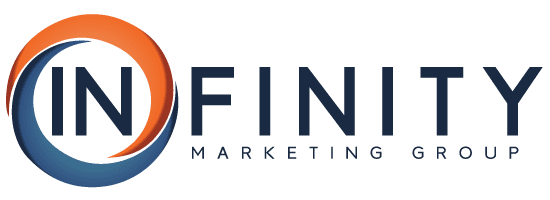
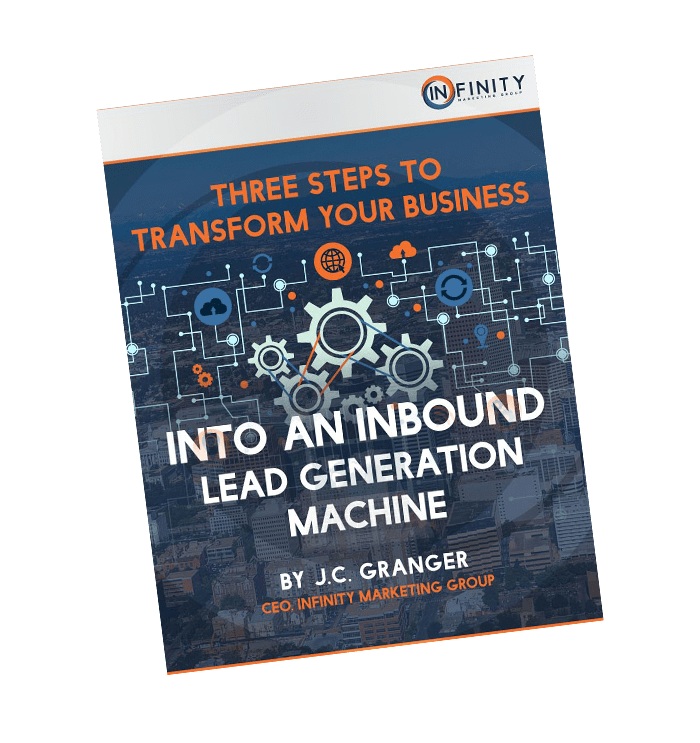
THREE STEPS TO
TRANSFORM YOUR BUSINESS
INTO AN INBOUND LEAD GENERATION MACHINE
[vc_empty_space height=”20px”]By J.C. Granger
CEO, Infinity Marketing Group
[vc_empty_space height=”50px”]INTRODUCTION
Mark and Susan are partners in a SaaS (Software as a Service) business. They enjoy moderate success in the local area, but very little new growth from outside their own locale. In order to take their company to the next level, they must devote serious efforts to enhance their marketing strategy, particularly how they can generate new leads. After reading countless articles and studies, and investing a substantial amount of capital on advertising, Mark and Susan become interested in a particular aspect of marketing called “inbound marketing.”
Why Inbound Marketing?
Inbound marketing uses marketing activities to attract customers and leads, rather than outbound marketing, which relies on interruption techniques to get prospects’ attention (Cold calling, SALE ads, commercials, etc.). Unlike outbound marketing, inbound marketing is customer-centric and focuses on providing content and resources when and where customers are looking for that information.
In both inbound and outbound marketing, each potential customer, whether it’s a person or a company, is considered a “lead.” Leads can be individuals who interact with the content on your website, sign-up for a newsletter, or someone who has been referred to you by others. Generally, anyone who provides you with his or her email address or phone number can be considered a lead as well.
This statement from HubSpot’s updated State of Inbound Report really struck a chord with Mark and Susan: “Inbound marketing delivers 54% more leads into the marketing funnel than traditional outbound sales, and companies that blog generate 126% more leads than those that don’t.” Mark and Susan have been in business long enough to know that more leads produces more sales.
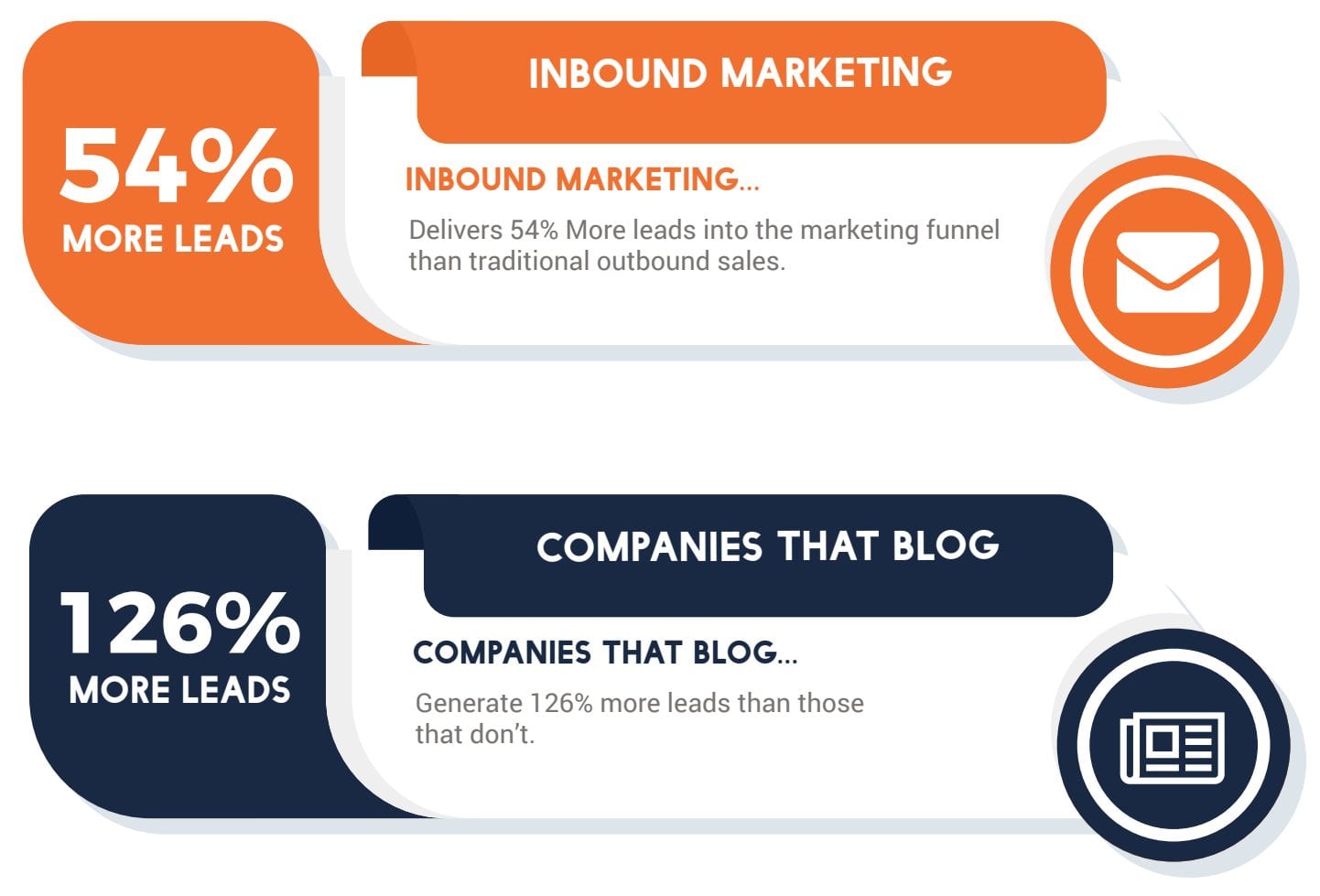 But here’s the kicker: Mark and Susan know little to nothing about the measures necessary. Here are some questions they’ve been asking:
But here’s the kicker: Mark and Susan know little to nothing about the measures necessary. Here are some questions they’ve been asking:
- Where do inbound leads come from?
- How do I attract those leads to my business?
- How can I use my company website to attract leads?
- Do I need new content for my site? Where do I get it?
- Can social media play a part in attracting leads? If so, how?
- Do I need to do paid advertising on Google or Facebook?
- How do I keep track of all my inbound lead marketing efforts?
- How do I get my website ranked on the first page of Google?
Do You Have Similar Questions?
Let’s dive in with Mark and Susan and discover three basic but vital steps to help you attract and harvest inbound leads for your business. Each step is outlined and described in simple terms for easy comprehension so you can understand what changes are needed, and how to make them.
[vc_empty_space height=”50px”]STEP ONE: CREATE AN INFORMATION CAPTURING WEBSITE
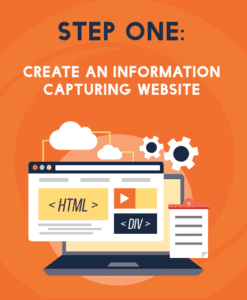
Mark and Susan have a web site for their business. It showcases their products and services, provides contact information, and displays their hours of operation. It is basically a signpost along the internet highway for users to see on their way somewhere else. The first step for transforming their small business into an inbound lead generating machine is to make some necessary changes to their website.
Design for Lead Generation
Mark and Susan must redesign their company website so it is optimized for lead generation. A simple informational website simply won’t do the job, as they have already discovered. They receive virtually no leads from their current website. In fact, many customers admit to not even being aware they have a website. Here are some of the best tactics for Mark and Susan to use to create a lead generating website.
>> LAYOUT
The layout of Mark and Susan’s website is critical to their success at generating leads. The right layout will help them funnel visitors’ attention to the areas that will help them most. Here are a few guidelines Mark and Susan should follow:
- Keep the message simple throughout the website
- Place Calls to Action (CTAs) strategically throughout the site, like info capturing forms
- Every page on the site should include a call-to-action
- Allow enough “white space” on web pages so offers stand out to the viewer
- Use social proof elements such as a client list, testimonials, or recommendations
- Include graphics when appropriate. Nothing is more boring than endless pages of text on a website!
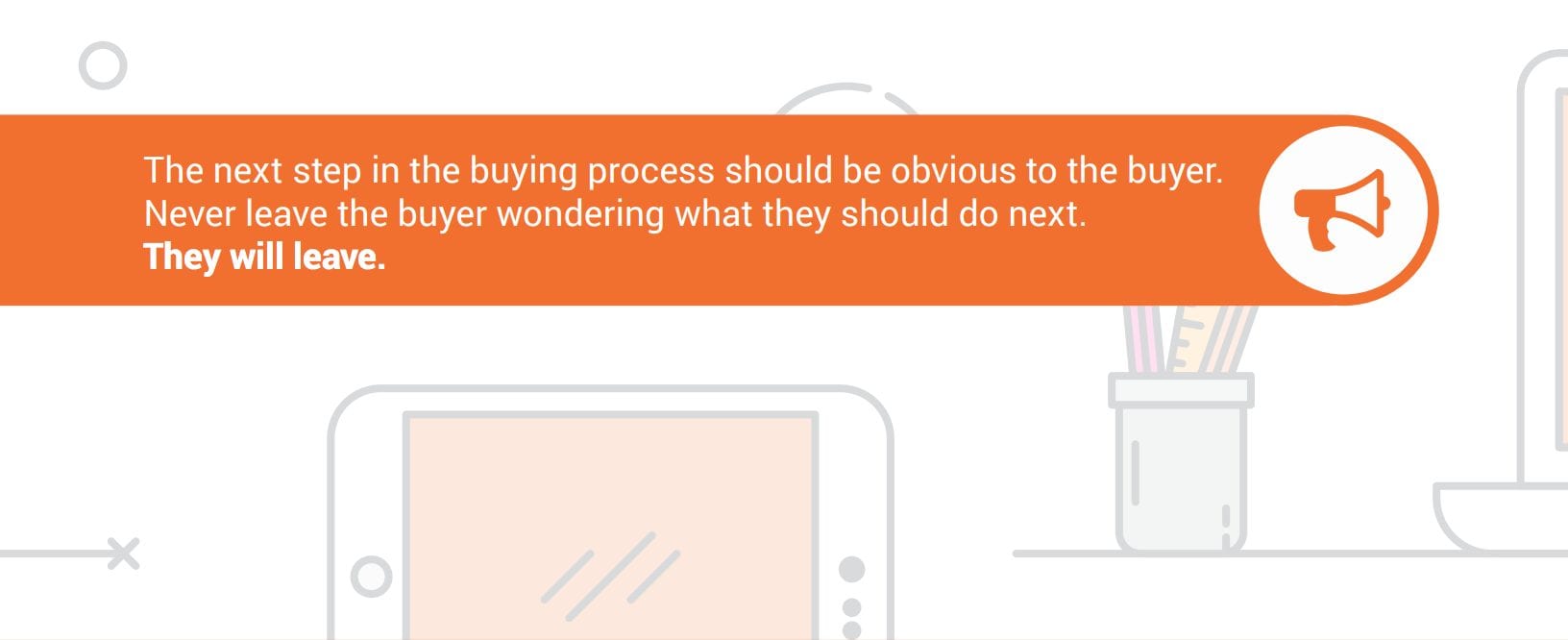
>> LANDing pages
A landing page is a web page that allows Mark and Susan to capture a visitor’s information through a lead form. A good landing page will target a particular audience, like traffic from an email campaign promoting a particular eBook, or visitors who click on a pay-per-click ad promoting a webinar. Mark and Susan need to build a unique landing page for each offer they create.
Because landing pages are the last point of contact before a website visitor fills out a form to become a lead, it’s important for Mark and Susan to make sure they are optimized correctly. Landing pages should follow the same design as the rest of the website. Here are some things Mark and Susan should keep in mind:
- Keep the layout of the landing page simple
- Use the shortest form possible to gather relevant info, ideally on the right side of the page (First name and email is best to start)
- The form button should say something other than submit, like “Download Now” or “Send me the Report” etc. (direct users to take specific action)
- Keep content short and sweet; a few sentences and bullet points make it quick and easy to read
- Use memorable, relevant images, for visual appeal
>> offers
Offers like downloadable eBooks, guides, checklists, webinars, and videos are a great way for Mark and Susan to begin engaging their buyers. Here are some tips for creating remarkable offers that generate leads:
- Offers should be clear, concise, and valuable. A specific action, such as submitting a name and email address or answering a few questions, will result in the user obtaining something of value to them.
- When placing offers on their website, Mark and Susan should ensure the primary offer for each page is easily visible. The offer should draw immediate attention. After all, the offer is their lead generating mechanism, so it must grab users’ attention and compel them to respond to the offer.
- Each offer should align with the answer to one of the ideal buyer’s questions. Mark and Susan should seek to offer something that provides true value to the user, something that helps the buyer. This, in turn, helps establish Mark and Susan’s business as a community or consumer partner and paints them in a favorable light. It also validates their expertise at their particular niche of professional service.
- Mark and Susan have now traded something of value (their knowledge or expertise) for something else of value – a lead (a name and email address, responses to questions, etc.).
>> SMART CTAs
Smart CTAs are Call-To-Action (CTA) graphics used in conjunction with Mark and Susan’s offers to present them in strategic locations throughout their website and blog. In essence, the CTA follows the user throughout the website as they browse from page to page, giving them more opportunities to take advantage of the offer. What makes CTAs “smart” is that the buyer is only shown a CTA if they have not already downloaded a particular giveaway. If they have already obtained Mark and Susan’s initial offer, this fact is recorded and they are shown another CTA for another offer, blog post, etc.

By using smart CTAs, Mark and Susan can guarantee that they are providing the best user experience possible and continue to answer questions with fresh, informative offers. The placeholders on each page may remain in the same location, but the offers are tailored to the user’s experience on the site. Smart CTAs can only be used if Mark and Susan integrate their website into a marketing software platform similar to Hubspot, Marketo, or Pardot. We’ll explore more about that a little later.
>> SMART CONTENT
Similar to smart CTAs, smart content is used to provide the buyer with personalized content based on their interests or stage in the buying cycle. This allows Mark and Susan to match their website content with the buyer’s next stage in their own personal buying process. In this way Mark and Susan can provide them with the most relevant content.
STEP TWO: UTILIZE A MULTILATERAL MARKETING APPROACH
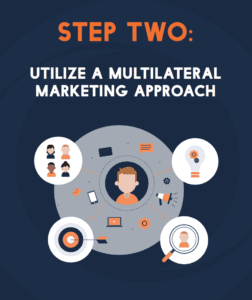 Utilize a multilateral marketing approach Recreating their website is a vital step in turning their business into an inbound lead generating machine. But it is only the first step. Mark and Susan must now build on that new foundation by using a multilateral marketing approach to engage their target audience. This approach takes inbound marketing to a new level by utilizing SEO tactics in their website and content, engaging consumers through social media, setting up pay-per-click advertising, and using targeted email messages. We’ll walk through the steps together here.
Utilize a multilateral marketing approach Recreating their website is a vital step in turning their business into an inbound lead generating machine. But it is only the first step. Mark and Susan must now build on that new foundation by using a multilateral marketing approach to engage their target audience. This approach takes inbound marketing to a new level by utilizing SEO tactics in their website and content, engaging consumers through social media, setting up pay-per-click advertising, and using targeted email messages. We’ll walk through the steps together here.
SEO (Search Engine Optimization)
Optimizing Mark and Susan’s website and blog content for search engines is vital. If users cannot find them, they will not buy their products or services. SEO involves keywords that consumers are using in their online searches for information. These keywords are sewn in strategic places throughout Mark and Susan’s web content in order to be noticed by search engines like Google. As the search engine software searches or ‘crawls’ a page of content, these keywords are noted and indexed. Therefore, when a user searches for a specific keyword, Mark and Susan’s content that is related to that keyword appears in the user’s search results. There are other factors involved, such as the number and quality of links in the content, and the number of words in titles and headings.
More than keywords in the right places or the correct number of links, quality content is the determining SEO factor of today. Mark and Susan need to create content about topics that are interesting to their audience. They must think about who their audience is and how the content could benefit them. Creating helpful and authoritative content will entice others to share their blog posts and other content and in turn, drive more traffic to their website. When deciding what content they should produce, Mark and Susan must consider the top questions and objections their potential customers have during the entire sales cycle, from awareness to just before purchase. SEO is a primary consideration in the following types of content:
>> BLOG POSTS
Blog posts are articles on topics in which potential customers would be interested and that relate to Mark and Susan’s products and services. These articles are provided on Mark and Susan’s website free of charge to every user, and typically include: List of tips and tricks How-to guides Opinion and analysis Answers to common questions Lists of upcoming industry events
>> INFOGRAPHICS
Infographics are a visual representation of data, instructions, or stories. Infographics have become more common in recent years, and can be more engaging than blog post text when it comes to displaying data, charts, and tables. Mark and Susan can use these graphics on web pages and blog posts to give users a brief glimpse of the page information in a memorable and colorful way. Infographics are also popular to share, which means they are a great means of spreading Mark and Susan’s reach across the entire internet population.

>> WHITE PAPERS AND GUIDES
White papers and guides are similar to blog posts, but are generally longer, more detailed, and presented in a downloadable PDF format. Unlike blog posts, white papers and guides are usually gated content used in offers, which means the reader has to provide their email or other information before they can download the document. Therefore they are generally of some level of monetary value, but provided free in exchange for something else of value – lead contact information. Some examples are:
- Multi-step processes for improving some aspect of business (like what you are reading now!)
- Detailed examinations of some aspect of business or popular pursuit
- In-depth how-to’s covering some aspect of life, hobby, or business
- Large stock of user-friendly templates for quick and easy use
- New information on popular topics not yet released to the public
>> VIDEOS
Content may be king, but video is the Emperor. Videos are much more engaging than reading text in blog posts. Moreover, they are incredibly effective at explaining complex concepts or sharing loads of information in a short time. They can also be used in almost every vertical of digital marketing.
- Websites
- Social media
- SEO
- Pay per click ads
- Email campaigns, etc.
 Social Media
Social Media
According to a report by Social Media Examiner, over half of marketers with at least one year of social media experience were generating leads with social platforms. In addition, 3 in 5 small and medium businesses say they’ve gained new customers by using social media. Mark and Susan can attract and harvest a virtual plethora of inbound leads by using social media to spread their message and content. The benefits of using social media include:
- Building Awareness – Consumers are more likely to buy from brands that are familiar to them and social media is an effective and low cost way to build familiarity. In fact, 92% of all marketers indicate that social media efforts have generated more exposure for their businesses. Mark and Susan can take their business before the global masses and engage an audience of unprecedented proportions, all from a computer screen.
- Staying Top of Mind – The average person spends 2.5 hours a day on social media. If Mark and Susan are determined that their business stay relevant, this means going where their customers spend time and interacting with them there. Responding to questions, follows, and the like gives Mark and Susan a personal presence among users, and builds trust.
- Being Seen as a Subject Matter Expert – Mark and Susan can become their prospects’ go-to source for industry news and education by regularly sharing relevant and valuable articles and resources. Consumers who return to their site again and again and receive quality assistance are more apt to purchase their goods and services. They have grown to trust Mark and Susan and their solutions to problems.
Although there’s a large range of social networks, from Facebook to Pinterest, for B2B startups and growing businesses, Mark and Susan should focus on three essential social networks: Facebook, LinkedIn, and Twitter.
Should Mark and Susan establish a strong presence on Facebook? No – they MUST. Over 1.2 billion people log into Facebook every day. 42% of marketers report that Facebook is critical to their business. Everyone who is anyone has a Facebook presence, and that goes for businesses. Company pages and groups make Facebook a prime engagement channel through which Mark and Susan can interact with clients and interested consumers.
- What to share: Company news, special features, contests, blog posts, inspiring news or tidbits
- How often to share: Daily if possible, midweek, Thursdays and Fridays
- When to share: Midweek between 1-3 PM, Thursdays and Fridays 1-5 PM local time.

LinkedIn is a professional social network with more than 347 million members worldwide. In addition to personal profiles, LinkedIn also has company pages and groups. LinkedIn is particularly effective for inbound marketing for B2B companies because everyone in the network is there for professional purposes. The search abilities let Mark and Susan identify potential leads because profiles show titles and employers. Company pages even show the number of employees. Mark and Susan have the ability to post updates via both their personal and company profile to allow them to stay top-of-mind with prospects.
- What to share: Company news, blog posts, industry articles and guides
- How often to share: Twice a week to once per day
- When to share: During weekdays from 7:30 to 8:30 AM, 12 PM, 5-6 PM local time.
Twitter is a social networking service that enables users to send and read short character messages called “tweets”. Twitter has over 288 million active users and over 500 million Tweets are sent a day.
- What to share: Company news, currently trending topics as it relates to your product or service blog posts, industry articles and guides; inspiring or entertaining quotes
- How often to share: 2-10 updates per day
- When to share: During weekdays in the afternoon to evening
>> YOUTUBE & VIMEO
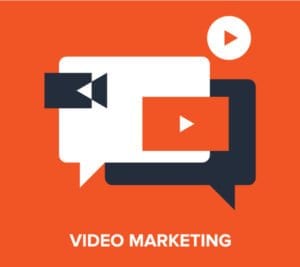 Video is one of the biggest marketing mediums, and according to a Cisco study, video accounts for 69% of internet traffic as of 2017.
Video is one of the biggest marketing mediums, and according to a Cisco study, video accounts for 69% of internet traffic as of 2017.
Two of the largest video social media platforms today are YouTube and Vimeo, with YouTube currently being the second largest search engine after Google with over 3 billion searches a month. Mark and Susan could create screen recordings, animated videos, and talking head videos on their own business channel and even develop a following.
>> instagram & pinterest
Other major social media networks include Instagram and Pinterest, both mainly photo-oriented channels. Although these are generally used more for B2C businesses than B2B businesses, Mark and Susan should consider if these platforms are a good fit for their company. Visually-oriented businesses can and do market effectively on these platforms.
Finding the Best Time to Post
Mark and Susan can get the most out of their social media updates by posting them at times when more of their followers are active or most likely to engage with the update. Tools that can help determine the best time for your specific followers include Tweriod (http://www.tweriod.com) and Followerwonk (https://moz.com/followerwonk).
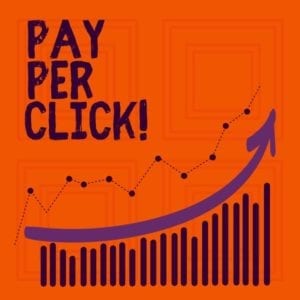 Pay-Per-Click (PPC)
Pay-Per-Click (PPC)
Pay-per-click marketing is a great way of using search engine advertising to generate clicks to your website, rather than “earning” those clicks organically. You know those sponsored ads you often see at the top of Google’s search results page, marked with a green “Ad” label? That’s pay-per-click advertising. You can also run PPC campaigns on Facebook and LinkedIn depending on your product/service and your target demographic. Every time an ad is clicked, sending a visitor to Mark and Susan’s website, they pay the search engine a small fee. When a PPC campaign is well-designed and running smoothly, that fee will be trivial, because the visit is worth more to their business than what they pay for it. For example, if Mark and Susan pay $10 for a click, but the click results in a $300 sale, then using PPC is a no-brainer. Overall, pay-per-click marketing is good for everyone:
- It’s good for searchers – Research indicates that searchers click on paid search ads more often than any other form of digital advertising. This means that people really don’t mind advertising, provided the products and services advertised actually fit their needs. And because we use search engines when we’re looking for products and services, the results, including the ads, are generally highly relevant to what we’re seeking.
- It’s good for advertisers – Advertisers are offered a unique means of putting their message in front of an audience who is actively and specifically seeking out their product. Because searchers reveal their intent through their search query, advertisers are able to measure the quality of traffic that results from search engine clicks.
- It’s good for search engines – PPC enables search engines to cater to searchers and advertisers simultaneously. The searchers comprise their user-base, while the advertisers provide them with their revenue stream. The engines want to provide relevant results, first and foremost, while offering a highly targeted, revenue-driving advertising channel.
The unique advantage of PPC marketing is that Google and other ad networks don’t just reward the highest bidders for that ad space, they reward the highest-quality ads (the ads that are most popular with users). Essentially, Google rewards good performance. The better Mark and Susan’s ads, the greater their click-through rates and the lower their costs. In order to get the most out of their pay-per-click marketing campaign, Mark and Susan need to follow a few best practices.
Keyword research for PPC can be time-consuming, but it is also incredibly important. An entire PPC campaign is built around keywords, and the most successful advertisers continuously grow and refine their PPC keyword list. If Mark and Susan only do keyword research once, when they create their first campaign, they are probably missing out on hundreds of thousands of valuable, long-tail, low-cost, and highly relevant keywords that could be driving traffic to their site.
An effective PPC keyword list should be:
- Relevant – Of course, Mark and Susan don’t want to pay for Web traffic that has nothing to do with their business. They want to find targeted keywords that will lead to a high PPC click-through rate, a low cost per click, and increased profits. That means the keywords they bid on should be closely related to the offerings they provide.
- Exhaustive – Their keyword research should include not only the most popular and frequently searched terms in their niche, but also extend to the long tail of search. Long-tail keywords are more specific and less common, but they add up to account for the majority of search-driven traffic. In addition, they are less competitive, and therefore less expensive.
- Expansive – PPC is iterative. Mark and Susan should constantly refine and expand their campaigns, and create an environment in which their keyword list is constantly growing and adapting.

>> MANAGING YOUR PAY-PER-CLICK CAMPAIGNS
Once Mark and Susan have created their new campaigns, they need to manage them regularly to make sure they continue to be effective. In fact, regular account activity is one of the best predictors of account success. Mark and Susan should continuously analyze the performance of their ads – even just 20 minutes a week can make a big difference – and make the following adjustments to optimize their campaigns:
- Add PPC Keywords: Expand the reach of pay-per-click campaigns by adding keywords that are relevant to their business.
- Add Negative Keywords: Add non-converting terms as negative keywords to improve campaign relevancy and reduce wasted spend.
- Split Ad Groups: Improve click-through rate (CTR) and Quality Score by splitting up their ad groups into smaller, more relevant ad groups, which help them create more targeted ad text and landing pages. Review Costly PPC Keywords: Review expensive, under-performing keywords and shut them off if necessary.
- Refine Landing Pages: Modify the content and calls-to-action (CTAs) of their landing pages to align with individual search queries in order to boost conversion rates. Mark and Susan don’t need to send all their traffic to the same page.
By continuously optimizing their pay-per-click campaigns, Mark and Susan will be able to grow their customer base and increase their return on investment (ROI).
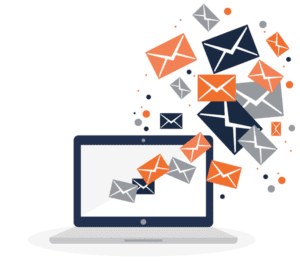 Email is an effective tool for capturing new leads, as well as nurturing existing leads. Despite the rise in the use of social media networks, marketers still rank email to be the best channel in terms of return on investment, with 68% of companies rating the channel as good or excellent. In fact, according to a study from McKinsey & Company, email is 40 times better at acquiring new customers than Facebook and Twitter, with conversions being 17% higher value than on social media.
Email is an effective tool for capturing new leads, as well as nurturing existing leads. Despite the rise in the use of social media networks, marketers still rank email to be the best channel in terms of return on investment, with 68% of companies rating the channel as good or excellent. In fact, according to a study from McKinsey & Company, email is 40 times better at acquiring new customers than Facebook and Twitter, with conversions being 17% higher value than on social media.
>> SETTING UP AN EMAIL NEWSLETTER
There are email solutions Mark and Susan can use, such as MailChimp (http:// mailchimp.com), Campaign Monitor (http://www.campaignmonitor.com), and Aweber (http://aweber.com) that are free or low cost (under $9/month) that will allow them to easily create and send newsletters. These solutions also include tools and analytics to help them optimize subject lines and track who opened or clicked their newsletter.
>> WHAT SHOULD YOU INCLUDE IN YOUR NEWSLETTER
Content Mark and Susan should include in their newsletter can range from summaries of their blog posts, links to third party articles, events, and special offers. MailChimp’s sample gallery of newsletters is a great place for inspiration.
>> SETTING A REGULAR SCHEDULE
A regularly scheduled newsletter helps Mark and Susan plan future editions and it sets an expectation for subscribers. Since Mark and Susan are new to email marketing, a quarterly or monthly schedule is a good starting frequency. They can also do email blasts when they have new promotions or offers.
>> ADDING SUBSCRIBERS
Mark and Susan can make it easy for people to opt-in to their email newsletter by displaying a signup form on their company’s website or blog. Most email service providers can generate a code snippet they can insert into their website to create a form.
>> USING EMAIL ANALYTICS FOR SALES & MARKETING
Email newsletter providers have analytics reports that track which recipients opened or clicked on links in Mark and Susan’s newsletter. They can see which contacts clicked on specific articles, and when a contact’s email bounces back. They can also use analytics to refine the format and content to maximize engagement.
>> ADVANCED EMAIL MARKETING: EMAIL AUTOMATION
Once Mark and Susan become familiar with basic email campaigns, they can take email marketing to the next level with automation. Email automation uses triggers to automatically send emails to individuals based on workflows Mark and Susan create. Examples of this are sending welcome emails when new subscribers first join their list, e-cards if it’s a recipient’s birthday, or additional emails with specific content based on links the recipient clicked in a past newsletter. Automation allows one person (Mark or Susan) to do the work of 10.
[vc_empty_space height=”50px”]STEP THREE: INTEGRATING A SOFTWARE SYSTEM TO AUTOMATE MARKETING
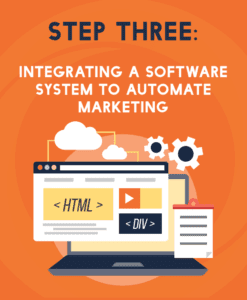 Connecting Mark and Susan’s website and inbound lead generating components to a software system is the final important step to creating and maintaining a lead-generating business. A single software system to assist them in creating, implementing, and analyzing marketing tactics and actions is the lubricant that allows all their other marketing components to operate smoothly. Marketing automation is a great way of guiding potential customers through their website, social channels, and email to generate new leads, all while converting existing ones. With marketing automation software, Mark and Susan can simplify:
Connecting Mark and Susan’s website and inbound lead generating components to a software system is the final important step to creating and maintaining a lead-generating business. A single software system to assist them in creating, implementing, and analyzing marketing tactics and actions is the lubricant that allows all their other marketing components to operate smoothly. Marketing automation is a great way of guiding potential customers through their website, social channels, and email to generate new leads, all while converting existing ones. With marketing automation software, Mark and Susan can simplify:
- Social Media Marketing
- SEO
- Content Creation
- Email Marketing
- Lead Generation
- Lead Nurturing
- Metrics and Analytics
- Management Activities
Automating these vital marketing processes will make Mark and Susan more effective. It will free up much of their time, while not compromising the authenticity of the content they produce. The ultimate goal with marketing is to generate more revenue for their company. To accomplish this, they need to drive traffic to their website, convert that traffic into leads and close those leads into customers.
>> HOW TO USE MARKETING AUTOMATION
Marketing automation will allow Mark and Susan to nurture leads through the entire buying process by delivering highly-targeted, personalized messages that address each consumer’s specific barriers to making a purchase. For example, here’s what a basic automated email workflow could look like:
- Mark and Susan send an email invitation to download their latest ebook to a targeted list of contacts.
- Mark and Susan send a thank you note to all the people that downloaded the offer.
- A few days later, Mark and Susan send a follow up email to the list of people who downloaded the ebook, offering them a case study relating to that topic.
- Finally, when a user downloads that case study, Mark and Susan get a notification so they can follow up with them. This user has expressed further interest in the goods and services Mark and Susan provide, meaning they are further along in the buying process.
Look at this experience from the user’s point of view. You received quality information for free, twice, about a topic in which you were interested. No generic email blasts written by a computer for the masses. It’s personal and tailored to your specific need. You now have a relationship of trust with Mark and Susan’s company. The interactions have not been forced or impersonal. When you’re ready to buy, and that is much more likely after this experience, you will choose Mark and Susan’s products or services. This is only one example of how Mark and Susan can drive revenue to their business with an automated system.
This is the beauty of marketing automation. It provides Mark and Susan with the ability to target contacts and send them content that is based on their behavior. They’re giving the user the information they need when they want it. Mark and Susan are simplifying the user’s decision to make a purchase. And the email automation example we used above is just the tip of the iceberg.

>> SEAMLESSLY HARVEST AND COLLATE INBOUND LEAD DATA
It all begins with gathering leads and lead data. Without lead data, your marketing efforts are flying blind. When users visit Mark and Susan’s website pages and complete forms to obtain offers, their information is automatically added to the database, along with an analysis of their data for better selection of leads for different uses. These leads receive a grade within the software system based on their activity on Mark and Susan’s website. This allows for segmenting lists of leads according to their responses, which makes it possible to target specific CTAs and email marketing with laser-like accuracy to the user’s needs and interests.
>> CREATE AND MANAGE MARKETING CAMPAIGNS
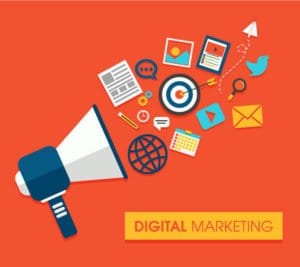 Using automated marketing software, Mark and Susan can design a variety of marketing campaigns and even assign different tasks within those campaigns to specific members of their team. The software allows each user to log in and perform their assigned tasks and signal the next team member in the project when their task is completed. Everything from content creation to scheduling to measuring effectiveness is either handled or facilitated by the software, enabling Mark and Susan, and their team members, to complete tasks quickly and efficiently.
Using automated marketing software, Mark and Susan can design a variety of marketing campaigns and even assign different tasks within those campaigns to specific members of their team. The software allows each user to log in and perform their assigned tasks and signal the next team member in the project when their task is completed. Everything from content creation to scheduling to measuring effectiveness is either handled or facilitated by the software, enabling Mark and Susan, and their team members, to complete tasks quickly and efficiently.
- Projects can be created for collaboration with team members
- Assign team members to specific responsibilities with deadlines for completion
- Social media tools and scheduling are integrated into the campaign
- Targeted ads can be created and automatically measured
- Analyze the overall effectiveness of each campaign, as well as each particular aspect to determine what worked best and what did not. Apply this data to future campaigns.
>> CREATE AND OPTIMIZE LANDING PAGES
We discussed earlier how Mark and Susan could use landing pages and specific CTAs to help inbound leads make purchasing decisions. With marketing automation software, there are tools for creating and optimizing these pages, as well as the means to manage their use and measure their effectiveness as a standalone campaign or part of a larger marketing strategy.
Mark and Susan can build landing pages that allow users to download content offers (eBooks, whitepapers, webinars, etc.), or to sign up for special offers like free trials or demos of their products. Creating landing pages allows Mark and Susan to target their audience, offer them something of value, and convert a higher percentage of their users into leads.
>> CREATE AND MANAGE CUSTOMIZED SMART CTAS

With marketing automation software, Mark and Susan can create different offers to be shown to specific categories of users, with integrated Smart CTAs on each page of their website. The software keeps track of who has visited their site, and what offers they have obtained. So, if a user has already downloaded an introductory white paper, for example, they would next be shown an offer for more information about that topic or another related service.
These different offers are created within the software with corresponding content provided for download. Actions are preset to user responses and corresponding data is automatically recorded and shared within the system, further qualifying leads as they respond to offers.
>> GENERATE CUSTOM REPORTS
Every aspect of Mark and Susan’s automated marketing harvests and measures data to evaluate effectiveness and pinpoint needed changes. Constant monitoring and evaluation allows them to tweak effective measures to increase effectiveness and even ditch measures that do not work or are not cost-effective. Possible reports include:
- Lead sources
- Event contacts
- Event analysis
- Offer download rate
- Number of contacts
- Contacts by source
- Contacts by segment
- Contact lifecycle funnel
- Average days to close by source
- Number of Marketing Qualified Leads (MQLs)
- MQLs by source
- Traffic by source
- Blog leads by source
- Visitor to lead conversion rate
- Revenue
- And many, many more.
Every aspect of marketing that the software automates can generate a report to share with Mark and Susan its level of effectiveness and/or weaknesses. These reports can be customized to include all manner of data and even be generated on an automatic schedule for consistent monitoring.
>> AVOIDING MARKETING AUTOMATION FAILS
Successfully using marketing automation software is a win-win situation. The buyer enjoys a simpler, more tailored sales process, while Mark and Susan get a more efficient sales system that results in customers who are better satisfied. However, anyone who has looked into marketing automation has read horror stories about those who have used it only to crash and burn. The fact is, these spectacular crashes are because of misuse, not a failure of the software to do what it was designed to accomplish. Here are some marketing automation fails that Mark and Susan should avoid.
- Using it as a Set-and-Forget Tool – Marketing automation needs constant care and adjustments for it to work effectively. Mark and Susan cannot pre program and simply expect the automation to do all the work. Marketing automation works as a supplement to their sales strategy, not a replacement for it. They should regularly test what their audience is engaging with most, and make sure the content they provide is scratching where users have an itch.
- Becoming Lazy – Just because Mark and Susan have automated certain aspects of their marketing with software doesn’t mean they can forget what marketing is about – building connections. Automating some of the processes to make tasks easier is only part of the equation. Relating to their audience is another. Mark and Susan must respond in a timely manner to all lead connections, and do so with a human touch. Consumers want to connect with them, not a robot.
- Sounding Like a Robot – Marketing automation is a tool, but it cannot and should not speak for you. Consumers need to hear a human voice in Mark and Susan’s content and see a human face in their images. An automatically generated letter from a programmed response to user input must be written by a person and sound personable to the recipient. Automation helps them work smarter, not become inhuman.
- Spam – Leave the spam in the can and focus on only providing users with quality information they want and need. Automating marketing processes is designed to help businesses harvest inbound leads and guide them through the sales funnel. If Mark and Susan are able to attract quality leads and guide them in such a way that only the most qualified make it through the funnel, they are well on the way to success. They will not accomplish this through general information blasts at their entire audience.
CONCLUSION

These great tactics are easier written about than carried out, and we’ve only covered the basics. How can Mark and Susan continue to run their business while integrating all these tasks and processes into their marketing strategy? Their options are either to hire a marketing master for their business and hope he or she can do it all, or contract a team of experts to handle these chores for them.
Mark and Susan were savvy enough to realize the tremendous potential of all this, but knew they could not do it themselves. They came to Infinity Marketing Group with some goals in mind, and we were able to design and carry out a plan tailored to their company that saw them enjoy a growing host of quality inbound leads for their business.
At Infinity Marketing Group, we don’t just carry out orders, we are your personal trainers for marketing. You have ambition; we have a plan. You tell us what you wish to achieve, we design and implement a plan to get you there.
Why not call us at 303-834-7344, email us at info@infinitymgroup.com or fill out the contact form and take the first step to letting us revitalize your company’s inbound marketing strategy?
We’re happy to help!
J.C. Granger
CEO, Infinity Marketing Group
www.InfinityMGroup.com
GET IN TOUCH WITH US
[vc_empty_space height=”25px”]
